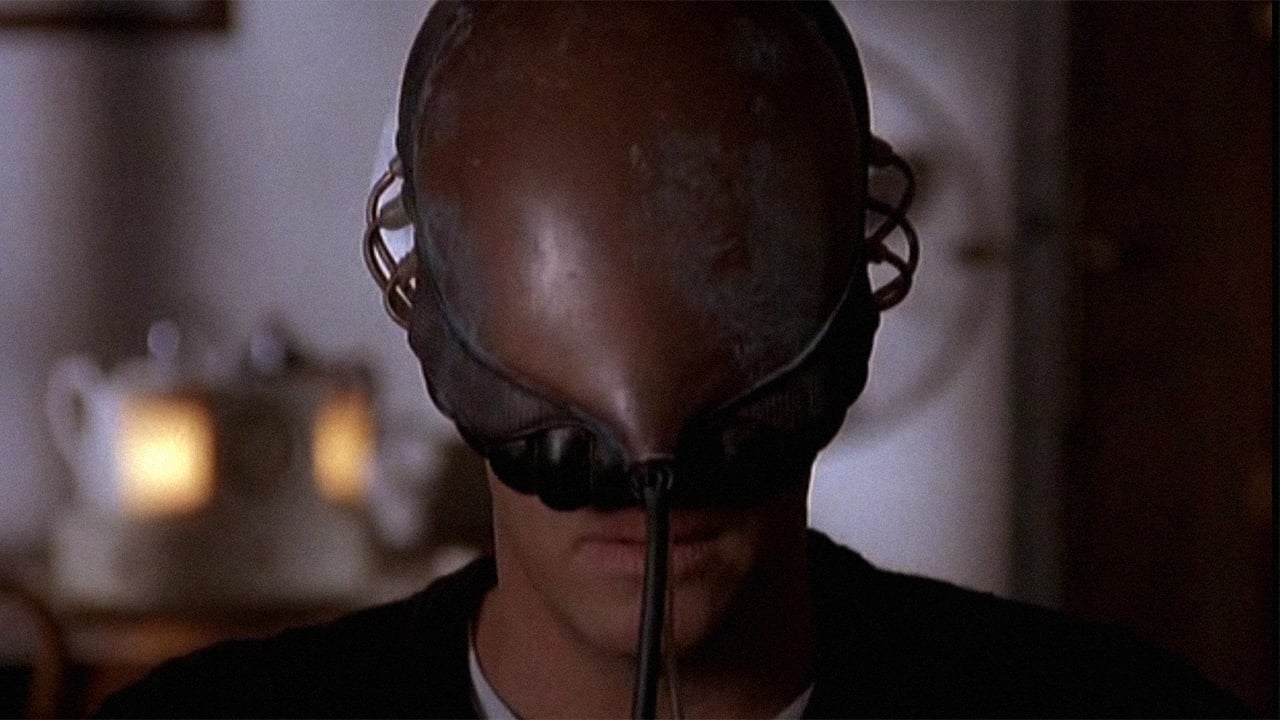Movie Review: Nirvana (1997)
[For the grunge & alternative rock band please go here]
The Matrix deals with virtual reality, which people there, for the most part, are unaware of. It also has guns and martial arts action in it. What makes the plot of The Matrix so different from other sci-fi action movies with a somewhat similar narrative is the film’s philosophical side with the problem of choice and the lead protagonist learning to know oneself, while it all is also bearing certain influences from Eastern religions, such as Buddhism, when dealing with understanding of the concept of reality. It may seem that, with all those ideas together, The Matrix was a novelty at the time, however there was a rather peculiar Italian cyberpunk sci-fi movie, released two years prior to The Matrix in Italy, and in 1998 in theatres in US, which dealt with things in virtual reality becoming self aware, capable of analyzing their reality and challenges, while the AI computer system was able to defend itself by deceiving human, using the latter’s memories and experiences; and all of the aforementioned was mixed with meditation techniques as well as people of diverse backgrounds.
Christopher Lambert of the Highlander and Mortal Kombat fame is a virtual game designer named Jimi, who, while dealing with separation from his wife Lisa (played by Emmanuelle Seigner, Roman Polanski’s spouse and the female star of director’s 1992 thriller drama Bitter Moon), had been working on a game called Nirvana. Three days before Christmas – the day of the game’s scheduled release by Jimi’s employer Okasama Star, Jimi has to face the fact that the main character in his designed game – Diego Abatantuono’s Solo, begins asking questions about where he is and why does he have to go through same experiences repeatedly. To be able to solve the problems such a turn of events presents, and also to find resolution regarding the depressing state of things regarding his failed marriage, Jimi sets off on a journey.

Nirvana movie still with Christopher Lambert as Jimi. Source
Nirvana is a great example of hero’s journey. On this journey Jimi is accompanied by his wife’s friend called Joystick (Sergio Rubini) and a tech wizard Naima (Stefania Rocca). Okasama Star tries a number of methods along the way to stop Jimi. Christopher Lambert is not much of a martial arts action hero in this; his appearance is rather static when compared to the roles he’s most known for – Nirvana puts significant focus on mind and ways of thinking rather than physical fights. Lambert’s diction is what makes up for the largely passive performance in this film, bringing the talent of a good speaker at the forefront of his play. However I should mention that all this cannot be asserted 100% since I watched the dubbed English version, which apparently lacks about 20 minutes, when compared to the original Italian film.

Nirvana movie still. Source
While Nirvana does contain tropes and sequences, usually seen in action movies, what the director and co-writer Gabriele Salvatores really seems to had been trying to achieve there is creating an experimental amalgam. Having worked also as a theatre director with particular flair for avant-garde before winning Academy Award for his film Mediterraneo at the 64th Academy Awards in 1992, Salvatores pushes aside comedy and takes on genres he’d not been working with before. As a result, themes of existentialism, globalization, psychology and science fiction get fused together. The sets and props in this futuristic exercise make for an unexpectedly good backdrop to the psychological and philosophical challenges the film deals with; the fact, which, I think, had been affirmed by several nominations for best production design awards back in 97. As a noteworthy example I would like to mention an armored vehicle with AI security system, which Joystick attempts to break into and take over using certain hacking techniques; the design of and interaction between human and computer there is, in my opinion, on par with the best sci-fi cinema, such as Total Recall.
What I liked most in Nirvana was Solo, and the woman the character was interested in, named Maria, played by Amanda Sandrelli. First of all, Solo isn’t very computer-like; he is more like someone out of Kafka story or Sartre play yet also not getting too philosophical about his persona. He tries to share his thoughts, prompted by self discovery, with Maria, but soon finds it increasingly difficult to do as she hasn’t got that same self awareness. Secondly, everything surrounding Solo and Maria is visually delivered by experimenting with film colorization – the latter is used as an effect to enhance the meaning behind the characters. This altogether should strike unprepared viewer as rather unexpected approach because one thing AI characters in movies don’t usually do is getting contemplative about the meaning of the purpose of their existence with ambition of becoming philosophers.

Nirvana movie still with Stefania Rocca as Naima and Sergio Rubini as Joystick. Source
Lastly, there is another interesting similarity to The Matrix franchise in Nirvana that I thought should be mentioned here, namely, doors. Those appear towards the end of the film and are similar to ones in The Matrix Reloaded, where Neo eventually gets to meet The Architect. I thought this was another peculiar correspondence between the two films because of how they, first and foremost, represent choice. Not that the protagonist always knows what's behind each of the doors thus he can't look before leaping; what determined the choice made in TMR, for instance, was the key, which unlocked particular door and none other.
There is some 1990’s CGI in those final scenes too in Nirvana, which makes for a stylish relic, fitting the overall storytelling in the film amiably.
Read my short review of 1999 sci-fi horror movie eXistenZ, dealing with a virtual reality game, here.
Read my review of 2021 sci-fi action movie The Matrix Resurrections with a computer game designer in virtual reality as its lead protagonist here.
Read my review of 2022 The Peripheral series, featuring gamers in virtual reality, here.
Read my review of 1995 cyberpunk action thriller Johnny Mnemonic here.
Read my review of 2022 thriller drama Don't Worry Darling, featuring themes of virtual reality, here.
https://twitter.com/229042655/status/1618277320510574592
The rewards earned on this comment will go directly to the people( @peerynt ) sharing the post on Twitter as long as they are registered with @poshtoken. Sign up at https://hiveposh.com.
interesting movie
!1UP
You have received a 1UP from @gwajnberg!
@cine-curator, @ccc-curator, @pal-curator
And they will bring !PIZZA 🍕.
Learn more about our delegation service to earn daily rewards. Join the Cartel on Discord.
I gifted $PIZZA slices here:
@curation-cartel(19/20) tipped @peerynt (x1)
Join us in Discord!
https://www.reddit.com/r/Portalawake/comments/1jwi86a/nirvana/
The rewards earned on this comment will go directly to the people sharing the post on Reddit as long as they are registered with @poshtoken. Sign up at https://hiveposh.com. Otherwise, rewards go to the author of the blog post.